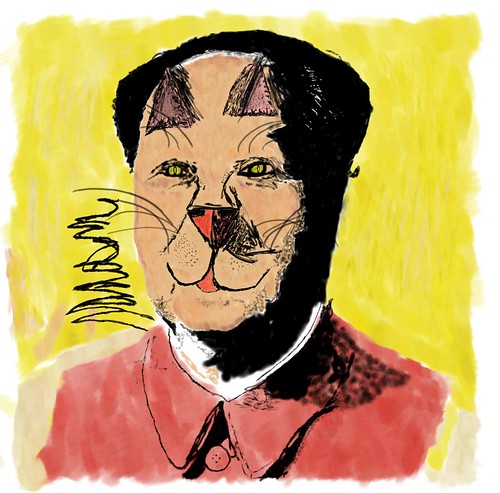Human Creativity

Image : http://www.flickr.com
When perceptions or anticipation/imagination creates new input, the brain’s initial action is to match the newly acquired phenomena with existing patterns stored in the explicit or implicit memory systems. When the brain fails to find a match, similar stored patterns are synthesized with externally or internally derived perceptions in order to produce new patterns. This can be looked upon either as a thinking process or as creativity.
By its nature, the act of creation must produce a significantly altered pattern (or patterns). It must be sufficiently grounded in existing patterns if it is to have adequate context. Nevertheless, it must have a requisite novelty if it is to stimulate learning. Snyder stated that:
Creativity is the act of rebellion by definition. You have to be downright subversive to break the rules and to confront conventional wisdom, don’t you? And if everyone accepts what you are doing when you are doing it, you’re obviously not on the forefront and you are doing something that is within the paradigm. If every accepts what I am doing, I’m in the wrong field. (Evans, 2007)
Like Treffert, Snyder sees savants somewhat as role models of human potentiality. He believes that savants see “the world as it really is and not as we do – through the filters of our experience. ” (Evans, 2007). He said that with savants this filter system does not work. He thinks that this brain defect is the secret to being exceptionally creative.
Professor Gerhard Roth of the University of Bremen, Germany, agrees with Snyder’s major premise. Roth said:
What neuroscientists have discovered is that creativity is mainly a function of the neuronal networks in the frontal brain. And that these networks strongly depend on a stimulant called dopamine. The higher the stimulus of the dopamine of the prefrontal cortex, the more creative people are. This can be quite easily explained by the fact that the networks of the frontal brain have access to our long term memory, which is actually stored at the back of the brain. This means that ideas -notions that were previously unrelated – are now brought together in a state of excitation. Ideas that were never thought of are now being thought. (Evans, 2007)
Numerous examples exist supporting these views. Another academician, Professor Michael Fitzgerald of Trinity College in Dublin (Evans, 2007), reviewed the biographies of several creative geniuses including Newton, Beethoven, Socrates, Albert Hitchcock, Andy Warhol, and Albert Einstein. What he found in common with each of them was that they all showed clear signs of Asperger’s Syndrome, which is a mild version of autism. Fitzgerald stated emphatically that all experts agree that the balance (i.e. energy produced by differing levels of cerebral blood flow) between the left and right hemispheres is distorted in all geniuses. Furthermore, he also points out that the people he studied showed an extreme talent for logic and systematizing, two skills that presume an enhanced ability to quickly synthesize new patterns. However, he is also quick to point out that they have poor social skills. This begs the question as to whether their weakness in that arena – which tends to be more left hemisphere related – further assists in their right brain abilities.
Apparently Snyder, Roth, and Fitzgerald agree with Treffert that left brain dominance is a factor limiting mental abilities, especially creativity. Whether left brain inhibition is a product of a birth-related defect, a childhood illness, trauma, mechanically produced by TCM, or through meditation or hypnosis, the fact remains that once the “tyranny of the left brain” is resolved, a surprisingly different set of skills are produced. What these scientists are saying is that the brain goes through cycles in which the right brain experiences novelty, and the left brain makes sense of it and promotes its encoding. An effective left-brain/right-brain partnership – which is not adversely affected by the resistance mechanism of the left prefrontal cortex – supports enhanced creativity.
Related : Free Online Advertising Brick Mailbox